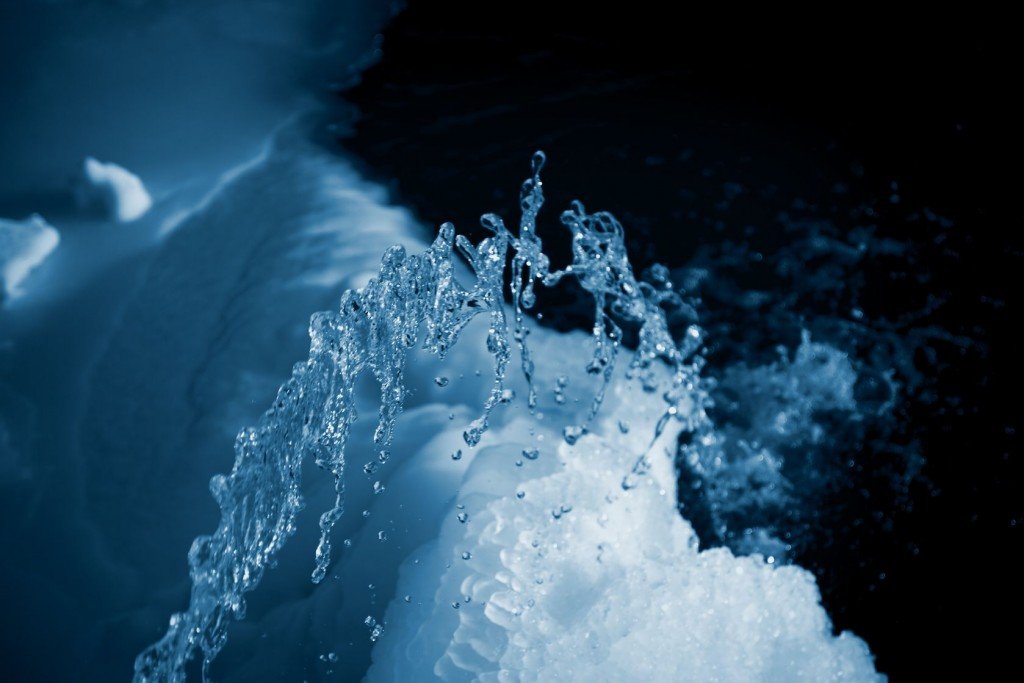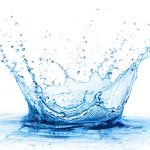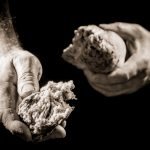Sussanna Czeranko, ND, BBE
For the various applications of water tend to remove the roots of the disease; they are able: to dissolve the morbid matters in the blood, to evacuate what is dissolved, to make the cleansed blood circulate rightly again, finally to harden the enfeebled organism.
-Pastor Sebastian Kneipp (9)[Kneipp’s] most important merit has been the success with which he raised his voice against over-refinement and unnaturalness, and with which he preached the return to nature; that is, to simplicity and moderation in everything.
-H. Moeser (570)
Without a doubt, cold water was the essence of Fr. Sebastian Kneipp’s 19th- and early 20th-century water cure treatments. He seems to emphasize this dramatically in the English edition of his classic 1897 book, My Water Cure, when he comments, “I follow my principle founded on experience: the colder, the better. In winter time, I mix snow with the water for shower-baths, when they are for healthy people” (Kneipp 18). Apart from snow, Kneipp had many guidelines to help people administer cold-water therapies with outstanding results. Last month, we explored some of Kneipp’s legendary treatments. This month, we will take a more in-depth look at what has made Kneipp’s water cure endure right through to the 21st century.
First Commandment: Cold Water Is Applied Only If the Body Is Warm
We should take note that Kneipp’s use of cold water was specifically prescribed for those who were warm. He cautioned, “[N]o one should venture to make any cold application whatever, when the patient is feeling cold, shivering, etc” (Kneipp 18). Kneipp taught that the application of cold water generated a definite course of actions and reactions. The initial action is diverting blood flow from the exterior to the interior, resulting in a blanching of the skin. Baumgarten, a contemporary of Kneipp, explained, “[B]ut if the flow of water continues, the skin will soon turn red again, for the one who applies the water knows that [s]he must let water flow until the skin has regained this tint” (124).
The mechanism for the skin’s color changes followed the physical law that heat expands and cold contracts. Baumgarten further explains that because cold causes contraction, especially of the blood vasculature, blood from the surface is forced to the interior when cold is applied to the body (124). The contraction of the capillaries lasts a short time, some 70 to 80 seconds, and then these capillaries expand, causing the blood to rush to the surface again. The more contrast between the body’s warm temperature and the cold of the water application, the greater is the effect.
Second Commandment: Before Each Cold-Water Application, Wet the Chest and Temples With Water
Bauergmund, a physician who worked beside Kneipp, reminded his readers, “It is an old custom to wet the forehead, the chest and the temples before taking a bath” (70). Lust himself had written about this “commandment” some years before. He explained, “A beginner should just take cold water out of a basin and apply it quickly to the arms, chest and upper part of the body, and then put on the clothing at once, without drying the skin with a towel” (Lust 1904, 147). More than a century later, the practice of wetting the head and chest with water before administering a Kneipp water treatment has been defended scientifically. Cantista, at the 2005 International Society of Medical Hydrology conference in Bucharest, Romania, explained that the dive reflex initiates cardiovascular response to immersion whether it is whole-body immersion or facial immersion. The dive reflex initiates bradycardia and peripheral vasoconstriction. Cold-water submersion causes the body to lose heat and to increase metabolism. Reducing blood flow to the peripheral limbs is the body’s attempt to conserve heat. However, merely applying cold water to the face or neck is enough to initiate the dive reflex in humans and to initiate bradycardia and peripheral vasoconstriction.
Third Commandment: No Cold-Water Applications After Meals
Bauergmund along with his contemporaries cautioned against the use of cold-water applications after eating. He advised that “after a meal the body must digest the food, so its activity is required for this process” (Bauergmund 70).
Fourth Commandment: No Cold-Water Treatment Is Used Longer Than Necessary
The early NDs not only documented timing guidelines for water applications but also gave advice about duration. Bauergmund, for example, explained, “[T]he object of all cold water applications is to cause a stimulation in the circulation of the blood, and they must last only long enough for this reaction to take place” (71). The reaction that Kneipp was looking for was a change in the color of the skin. On first exposure to cold water, the blood vessels in the skin constrict, causing blanching. This was followed by the blanched skin’s being “replaced by redness and the sensation of chilliness by that of comfortable warmth” [Bauergmund 71]. He goes on to indicate that the reaction “depends always on the degree of cold. The colder the water the more intense the narrowing of the vessels and the quicker and the stronger the reaction” (Bauergmund 71). Kneipp was an ardent lover of cold water, and “after constant experiments [he] came to the conclusion that the shortest baths were the best and easiest to take” (Lust 1901a).
Fifth Commandment: After a Cold-Water Application, the Body Must Never Be Wiped Dry
One of the golden rules that Kneipp established for after-the-bath protocol is that the body is not dried with towels, but rather the patient dresses quickly in coarse porous linen or cotton clothing (Lust 1904, 147). Kneipp wrote: “This is done quickly so that all the wet spots are closed hermetically” (19). Bauergmund stated, “If the body is not dried, more warmth will be developed and appear on the surface, the blood circulates more quickly, and the assimilation is increased” (71). Kneipp counseled against wiping dry, which “produces disproportionate natural warmth…the not wiping helps to most regular, most equal and most speedy natural warmth” (19).
For the invalid or those who had trouble warming themselves after cold applications, going to bed immediately and being covered was indicated. For the stronger patient, Lust counseled rapid dressing and taking a brisk walk of at least half an hour (1901c, 56). Porous clothing donned after water treatment had the effect of causing the water to evaporate slowly, producing some cold and stimulating the skin, thus achieving better results. Kneipp himself believed that only the parts of the body exposed to air should be dried such as the head and hands (19).
Sixth Commandment: After a Cold-Water Treatment, Get Warm, Dry and Comfortable
Exposure to cold water increases the metabolism of the body to a similar degree that hard work would elicit lots of perspiration. Stopping activity suddenly during perspiration can cause a sudden stagnation of blood and chills. It is for this reason that Kneipp instructed his patients to adopt exercise to keep the body warm and the circulation flowing quickly. Kneipp says, “We strictly prescribe exercise to be taken (either by working or walking) as soon as the patient is dressed after the application and this must be continued, until all parts of the body are perfectly dry and in normal warmth.… As a rule for all it may be said that the shortest time for exercise after an application ought to be at least 15 minutes“ (19-20).
The amount of exercise depended on the constitution of the patient and the air temperature. Bauergmund states: “If this is below 60F, strong individuals may take exercise out of doors, weak ones should do so indoors. If warmth is not brought on by exercise, the patient ought to be put to bed” (71).
Seventh Commandment: No Excesses
Kneipp warned against too strong or too frequent applications of water, which could cause injury: “For 30 years I have tried every single application upon myself. I found myself induced to change my system to loosen the strings, to descend from strictness to softness, from great to still greater softness” (6). Bauergmund advised, “Sick, but otherwise healthy people may take three applications a day during the summer and one every day during the winter; healthy people may take three applications every week” (73). He further emphasized that “the evil of excess has often caused fatal crises and has brought hydropathy into evil repute” (Bauergmund 73). Setting down helpful guidelines, he cautioned further that “there is a limit; if the water is too cold, no stimulation in the blood vessels, but lameness and relaxation would be the consequence” (Bauergmund 70). This would not be the case, however, if water is above 45F.
Conscious of Kneipp’s affinity for sometimes frigid applications of water, Bauergmund suggested respectfully, “We must avoid uniform exercises; we must avoid uniform cold water applications. Individualize and avoid excess.” Furthermore, a first-time patient using the Kneipp water cure “may always begin with water at a temperature several degrees warmer than that prescribed; after a time, his body will become accustomed to a cooler temperature, and water of about 77F will then seem hardly so cold to him as water of 81F or 85F seemed at first” (Lust 1901b, 2).
Eighth Commandment: Clothing Is Light and Comfortable, Even in Winter
Related to the application and process of water cures, the early “nature curists” had recommendations about appropriate clothing during treatment regimens. In fact, even the right kind of clothing worn next to the skin was debated among the early practitioners. For example, Bauergmund suggested that wool absorbed humidity but hindered evaporation and fine linen absorbed moisture, causing the fabric to stick to the skin (73). The fabric promoted by Kneipp as the most ideal was coarse linen or hemp cloth (11). Bauergmund believed that strong linen or hemp cloth “will both absorb and exhale more humidity and is, therefore, to be recommended for use during cold water treatment” (73).
Our early colleagues certainly also had advice about clothing worn before, after and between treatments. It is well to remember that the fashion of the day included “narrow high collars; tight corsets, the elastic garters and narrow shoes” (Bauergmund 73). In this regard, Bauergmund counsels, “[E]very woman ought to know that too tight a corset impedes the right breathing of the lungs, oppresses the heart, and consequently impairs the blood and disturbs the functions of the organs in the abdomen” (73).
Ninth Commandment: Successful Water Treatment Depends on the Right Kind of Food and Drink
Bauergmund contends that “hydropathy would never have been attended by so many excellent results, if diet had not been one of its chief healing factors” (74). The diet recommended by Kneipp included a mixture of animal and vegetable food. Kneipp states clearly, “My chief rule is: dry, simple, nourishing household fare not spoiled by art or by strong spices, the drink should be the genuine beverage offered by God in every well. Both taken moderately are the best and most wholesome nourishment for the human body” (10). Kneipp advocated rye, wheat bran, and spelt breads and soups made from these black breads as strengthening fare, commenting that ”vegetarianism was good, if the dietary were properly arranged” (Lust 1904, 148).
Tenth Commandment: Sleep and Rest in Correct Proportion
Not only did our naturopathic forebears have much to say about the water cure treatments themselves, about appropriate clothing and drying methods, but they also counseled patients about sleep as part of a cure regimen. Bauergmund stated: “During a course of water treatment the patient ought to retire at eight o’clock in the evening, and rise at six o’clock in the morning, then sleeping during the day is not necessary; though weak and anemic persons may rest for an hour or so during the day” (76). Kneipp attributed the causes of sleeplessness to irregular circulation, suppressed or insufficient transpiration [breathing] tormenting the digestion or unequal distribution of heat in the body (349-50). He cautioned that “care should be taken to air thoroughly all the sitting and bedroom [areas], day by day…[and] above all great attention must be given to the airing of the beds” (Kneipp 12).
Undoubtedly, the protocols, advice and diligence of Kneipp and his disciplines have migrated across a dozen decades to our own time. They are as effective in the second decade of the 21st century as they were in the last decade of the 19th.
 Sussanna Czeranko, ND, BBE is the curator of the rare book collection at NCNM in Portland, Oregon. She is currently compiling an eight-volume series on nature-cure topics for the profession. She is also an adjunct faculty member of the Transformative Voice Institute in Portland, the founder of the Breathing Academy, and a founding board member of the Buteyko Breathing Educators Association. She is a licensed naturopathic doctor in Ontario and in Oregon, and a graduate of CCNM. She has been in practice since 1994, incorporating nature-cure modalities and tools into her practice with great success.
Sussanna Czeranko, ND, BBE is the curator of the rare book collection at NCNM in Portland, Oregon. She is currently compiling an eight-volume series on nature-cure topics for the profession. She is also an adjunct faculty member of the Transformative Voice Institute in Portland, the founder of the Breathing Academy, and a founding board member of the Buteyko Breathing Educators Association. She is a licensed naturopathic doctor in Ontario and in Oregon, and a graduate of CCNM. She has been in practice since 1994, incorporating nature-cure modalities and tools into her practice with great success.
References
Bauergmund. “How Should Kneipp’s Treatment Be Taken?” The Naturopath and Herald of Health. 9 (3), 1908: 69-76.
Baumgarten, A. “Water Applications.” The Naturopath and Herald of Health. 4 (5), 1903: 124-6.
Cantista, P. “Physical Principles of Balneology and Medical Hydrology.” Proceedings From the 33rd Congress of the International Society of Medical Hydrology, Bucharest, Romania. Szeged, Hungary: ISMH, 2005.
Kneipp, S. My Water Cure. Kempten, Bavaria: Joseph Koesel Publisher, 1897.
Lust, B. “The Cold Full Bath.” The Kneipp Water Cure Monthly and Herald of Health. 11 (3), 1901a: 75.
Lust, B. “Father Kneipp and His Methods.” The Naturopath and Herald of Health. 5 (7), 1904: 145-9.
Lust, B. “The Natural Method of Healing.” The Kneipp Water Cure Monthly and Herald of Health. 11 (1), 1901b: 1-2.
Lust, B. “The Process of Not Drying Oneself, According to the Kneipp Water Treatment.” The Kneipp Water Cure Monthly and Herald of Health. 11 (2), 1901c: 56-7.
Moeser, H. “In Commemoration of Sebastian Kneipp.” The Naturopath and Herald of Health. 18 (9), 1913: 569-71.





